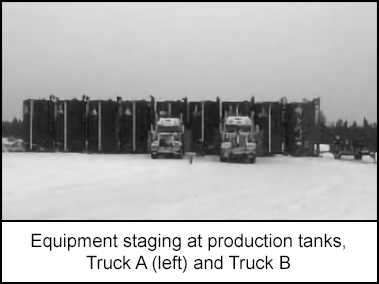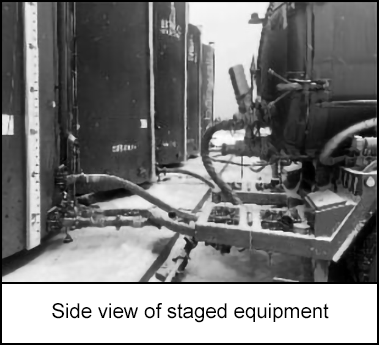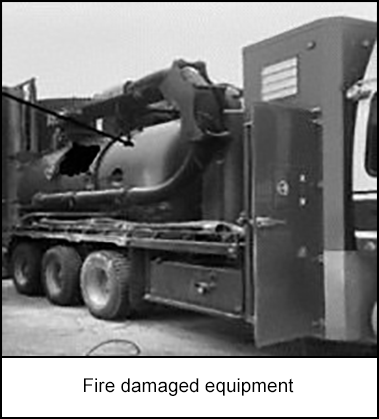-
What happened?
Multiple vacuum trucks performing production tank cleaning operations were involved in a flash fire. No injuries occurred.
Truck A was operating at the time. Truck B, located approximately 3 m away, had just completed tasks. Vented exhaust from Truck A was directed towards the fired boiler on Truck B. The vented exhaust caused an explosion and fire. Workers were able to perform an emergency shut down (ESD) and extinguished the fire.

-
Why did it happen?
- The field level hazard assessment did not recognize the potential flammable hazards, use of a vent line, direction of vented exhaust, or associated fired equipment nearby.
- The vac trucks were staged too close together for the tasks.
- The scope of work did not account for the potential of simultaneous operations.

-
What did they learn?
- Field level hazard assessments should include hazards related to simultaneous operations and working with flammable products.
- Safe equipment staging, including vent line placement, should be considered during simultaneous
tasks. - While working with flammable products, ongoing Lower Explosive Limit (LEL) measurement should be conducted.
- Formal hazard assessments should include potential hazards for simultaneous operations and flammable products.

-
Ask yourself or your crew
- How can something like this happen here (e.g. on our site)?
- What safety measures (i.e. procedures, controls/barriers) do we have in place to mitigate the risk?
- How do we know the risk controls/barriers are working?
- What improvements or changes should we make to the procedures, controls/barriers or the way we work?

Add to homescreen
If you want to add this app to home screen tap and then ‘Add to Home Screen’.
Content name
Select existing category:
Content name
New collection
Edit collection
What happened?
Multiple vacuum trucks performing production tank cleaning operations were involved in a flash fire. No injuries occurred.
Truck A was operating at the time. Truck B, located approximately 3 m away, had just completed tasks. Vented exhaust from Truck A was directed towards the fired boiler on Truck B. The vented exhaust caused an explosion and fire. Workers were able to perform an emergency shut down (ESD) and extinguished the fire.

Why did it happen?
- The field level hazard assessment did not recognize the potential flammable hazards, use of a vent line, direction of vented exhaust, or associated fired equipment nearby.
- The vac trucks were staged too close together for the tasks.
- The scope of work did not account for the potential of simultaneous operations.

What did they learn?
- Field level hazard assessments should include hazards related to simultaneous operations and working with flammable products.
- Safe equipment staging, including vent line placement, should be considered during simultaneous
tasks. - While working with flammable products, ongoing Lower Explosive Limit (LEL) measurement should be conducted.
- Formal hazard assessments should include potential hazards for simultaneous operations and flammable products.

Ask yourself or your crew
- How can something like this happen here (e.g. on our site)?
- What safety measures (i.e. procedures, controls/barriers) do we have in place to mitigate the risk?
- How do we know the risk controls/barriers are working?
- What improvements or changes should we make to the procedures, controls/barriers or the way we work?
Published on 31/05/23
1345 Views
Multiple vacuum trucks performing production tank cleaning operations were involved in a flash fire. The vented exhaust caused an explosion and fire. Workers were able to perform an emergency shut down (ESD) and extinguished the fire. No injuries occurred.
Original material courtesy of Energy Safety Canada














